A University of Chicago-led team found a computational problem that showed entanglement is responsible for quantum speedups.


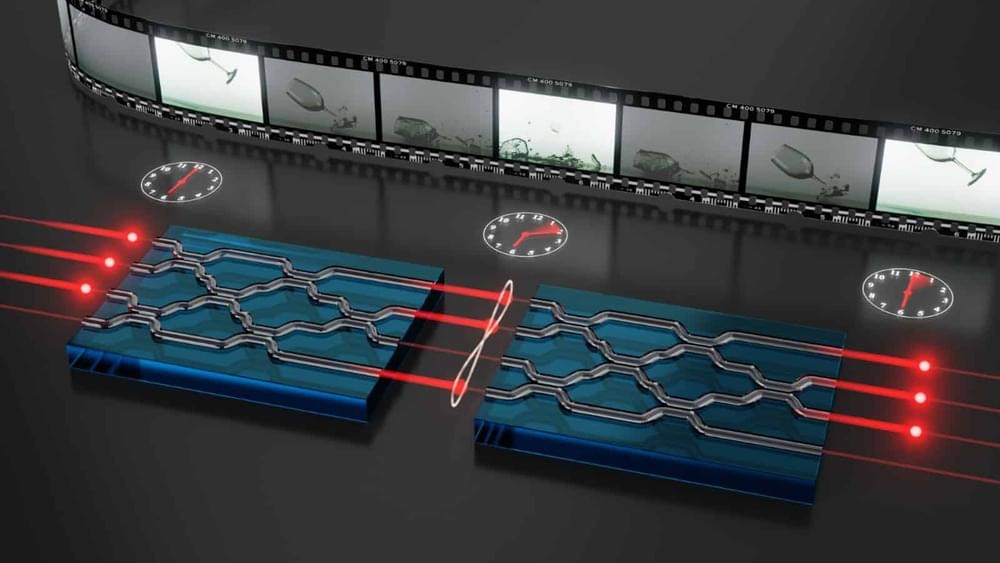
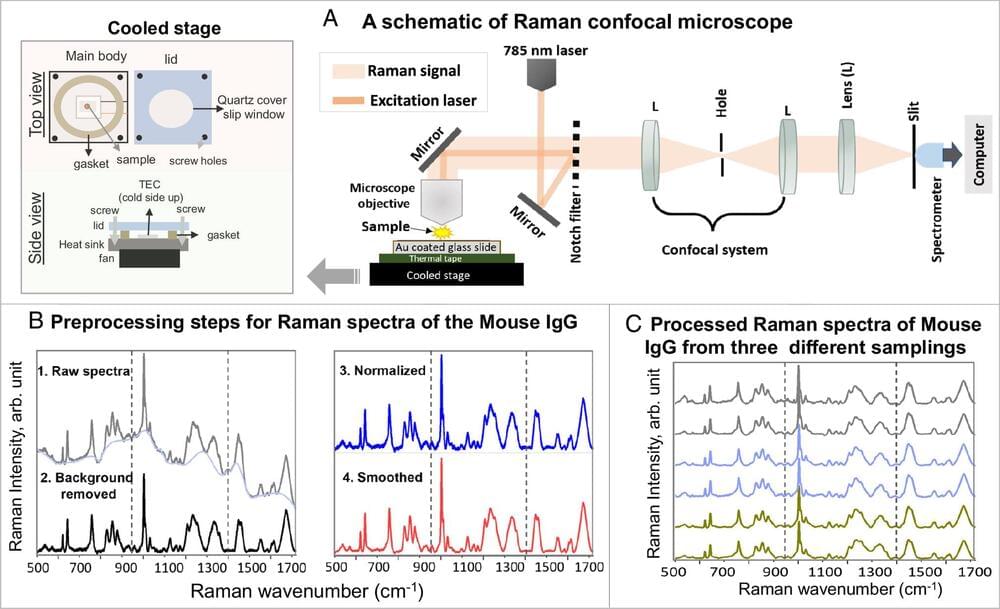
Raman spectroscopy—a chemical analysis method that shines monochromatic light onto a sample and records the scattered light that emerges—has caused frustration among biomedical researchers for more than half a century. Due to the heat generated by the light, live proteins are nearly destroyed during the optical measurements, leading to diminishing and non-reproducible results. As of recently, however, those frustrations may now be a thing of the past.
A group of researchers with the Institute for Quantum Sciences and Engineering at Texas A&M University and the Texas A&M Engineering Experiment Station (TEES) have developed a new technique that allows low-concentration and low-dose screenings of protein-to-ligand interactions in physiologically relevant conditions.
Titled thermostable-Raman-interaction-profiling (TRIP), this new approach is a paradigm-shifting answer to a long-standing problem that provides label-free, highly reproducible Raman spectroscopy measurements. The researchers published their findings in the Proceedings of the National Academy of Sciences.
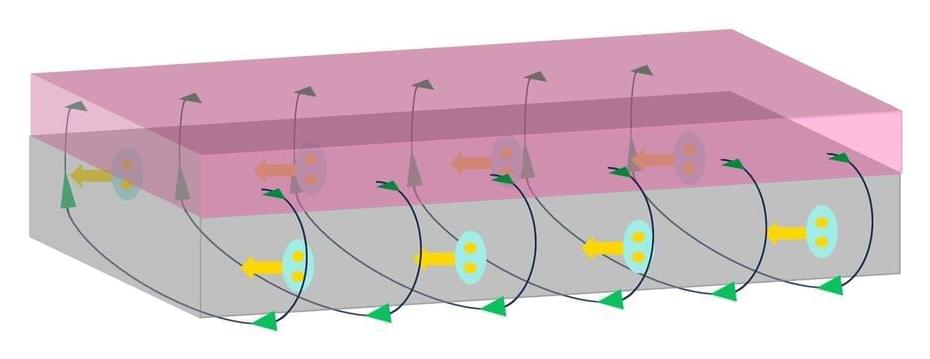
MIT scientists and colleagues have created a simple superconducting device that could transfer current through electronic devices much more efficiently than is possible today. As a result, the new diode, a kind of switch, could dramatically cut the amount of energy used in high-power computing systems, a major problem that is estimated to become much worse.
Even though it is in the early stages of development, the diode is more than twice as efficient as similar ones reported by others. It could even be integral to emerging quantum computing technologies. The work, which is reported in the July 13 online issue of Physical Review Letters, is also the subject of a news story in Physics Magazine.
“This paper showcases that the superconducting diode is an entirely solved problem from an engineering perspective,” says Philip Moll, Director of the Max Planck Institute for the Structure and Dynamics of Matter in Germany. Moll was not involved in the work. “The beauty of [this] work is that [Moodera and colleagues] obtained record efficiencies without even trying [and] their structures are far from optimized yet.”

An international team of scientists has succeeded in experimentally confirming a characteristic of topological materials.
Scientists from around the globe have experimentally confirmed a unique characteristic of topological materials. Using ‘3D glasses’-like technology and particle accelerators, they successfully visualized the relationship between an electron’s topology and its quantum mechanical properties, marking a significant step forward in understanding these future-focused materials.
Topological quantum materials are seen as a beacon of hope for energy-saving electronics and the high-tech of the future. A defining feature of these materials is their ability to conduct spin-polarized electrons on their surface, while remaining non-conductive inside. To put this into perspective: In spin-polarized electrons, the intrinsic angular momentum, i.e. the direction of rotation of the particles (spin), is not purely randomly aligned.
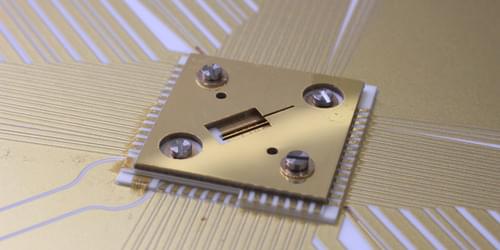
A laser for vibrational energy, rather than for light, operating in the quantum regime could teach researchers about the interplay between spin, vibration, and dissipation in quantum mechanics.
Phonon lasers replace the light excitations (photons) that are used in a standard laser with vibrational excitations of matter (phonons). Researchers have now coaxed two ions into forming a phonon laser containing fewer than 10 phonons, placing it firmly in the quantum regime [1], whereas previous phonon lasers had at least 10,000 phonons. The researchers plan to use this quantum phonon laser as a tool to investigate the role of dissipation in the behavior of quantum systems.
Dissipation—energy leaking into or out of a system in the form of heat—is often seen as a nuisance in physics, for example, when it takes the form of air resistance and reduces the fuel efficiency of a car or an airplane. But quantum systems also exhibit dissipation, and its effects in the quantum realm are not fully understood. Jonathan Home of the Swiss Federal Institute of Technology (ETH) in Zurich and his colleagues wanted to investigate how two separate sources of dissipation can interact to affect the behavior of a quantum system. “A laser is the simplest quantum system we could think of” that allows such experiments, Home says.

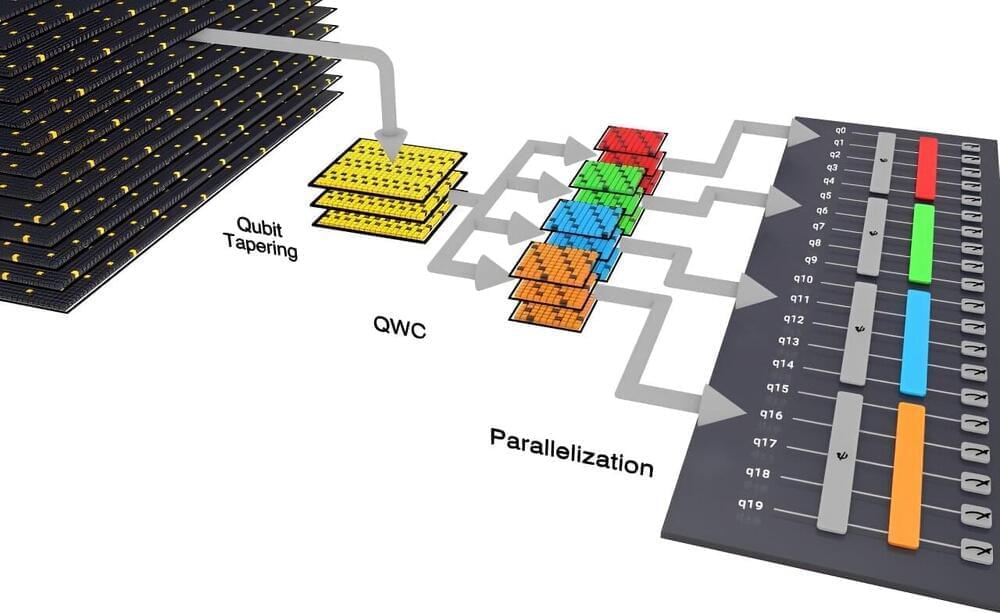
Using the full capabilities of the Quantinuum H1-1 quantum computer, researchers from the Department of Energy’s Oak Ridge National Laboratory not only demonstrated best practices for scientific computing on current quantum systems but also produced an intriguing scientific result.
By modeling singlet fission —in which absorption of a single photon of light by a molecule produces two excited states —the team confirmed that the linear H4 molecule’s energetic levels match the fission process’s requirements. The linear H4 molecule is, simply, a molecule made of four hydrogen atoms arranged in a linear fashion.
A molecule’s energetic levels are the energies of each quantum state involved in a phenomenon, such as singlet fission, and how they relate and compare with one another. The fact that the linear molecule’s energetic levels are conducive to singlet fission could prove to be useful knowledge in the overall effort to develop more efficient solar panels.

Throughout history, humans have gazed at the sky, contemplating the celestial lights, including the sun, the moon, and beyond. In those ancient moments, an insatiable curiosity ignited within them, urging them to seek answers about the origins of the cosmos. Over time, this burning curiosity has been passed down, compelling generations to develop theories in pursuit of one timeless question: Where did it all come from?
One of the most complete and widely accepted theories in this regard is the Big Bang Theory. The Big Bang is a scientific theory that proposes that the birth and development of the universe originated from a point in space-time called the singularity. Think of this in a way that all the matter and energy of the universe were trapped in an inconceivably small point of high density and high temperature (Williams & Today, n.d.). It is theorized to be a colossal release of energy that initiated the rapid expansion of the universe over 13.7 billion years that led to the creation of galaxies, stars, planetary systems and eventually humankind. What happened that led to the sudden expansion? This question continues to puzzle cosmologists, as the answer remains unknown to this day (What Is the Big Bang Theory? n.d.).
In 1915, while developing his General Theory of Relativity, Albert Einstein faced a challenge. If gravity were to solely attract all objects, the universe would ultimately collapse under its overwhelming force. However, observations indicated that the universe was not collapsing. To address this issue, Einstein introduced a cosmological constant into his equations. This constant acted as a counterforce to gravity and proposed a static model of the universe. Little did Einstein know that an astronomer named Edwin Hubble would soon contradict his proposed static model of the universe. Working at Mount Wilson Observatory in California, Hubble made a noteworthy observation in the late 1920s. He noticed a peculiar phenomenon known as redshift, where light emitted by celestial bodies moved toward the red end of the spectrum, indicating that they were moving away from us (Vogel, 2021).
